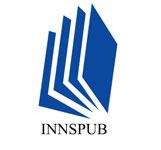Article,
Opportunities and challenges of peri-urban agriculture on the fringes of the Metropolis of Rabat, Morocco | JBES 2021
Journal of Biodiversity and Environmental Sciences | JBES, 18 (3): 47-53 (March 2021)
DOI: 10.5281/zenodo.6637801
Abstract
The current study was aimed to assess practices, roles and challenges of peri-urban agriculture in Rabat Metropolis. Through purposive and stratified random sampling methods 50 respondents were selected. To achieve the objectives of this study both qualitative and quantitative methods of data analysis were used. Data collection from farmers was based on field observation, interviews and field surveys. Descriptive statistics such as frequency distribution, Chi-square test, tests of normality and homogeneity of variances and Principal Component Analysis (PCA), were used. According to the major findings of the study, the major types of peri-urban farming practices in the study area includes: horticulture or production of fruits and vegetables, crop farming and some livestock rearing such as beef farming, sheep farming and poultry farming. The survey result reveals that there are various significances of PUA in the study area: it contributes to the economic development of the metropolis as it generates income for farmers, creates employment, contributes to food supply and enhances economic use of land and environmental beatification of the city. In the Metropolis of Rabat, PUA faces several constraints: legal constraints mainly the absence of laws regulating this activity and the obligation of some farmers in the peri-urban area to pay housing taxes. It is also subject to many technical constraints such as insufficient workforce and high labor costs, difficult access to irrigation water, lack of training and technical supervision and support from the concerned body. Finally, recommendations and suggestions have been forwarded based on the findings of the study.
